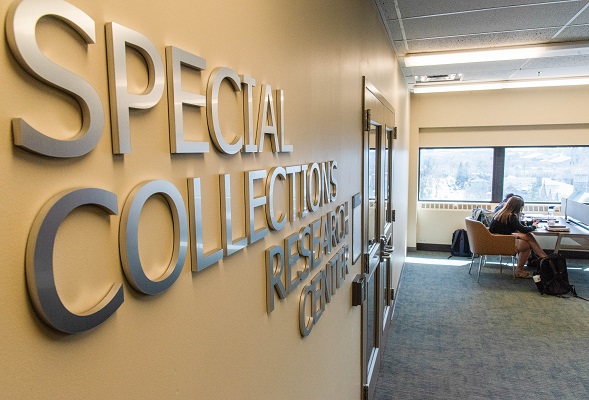The Victor Perera Papers include correspondence, book and article drafts, Sephardic genealogy research, professional and teaching papers, research subject files, notebooks, personal materials, audiovisual materials, and thousands of travel photographs and slides. The collection is divided into 6 series:
Series 1: Correspondence, 1949-2002 includes combined incoming and outgoing correspondence arranged first by date and then by correspondent's name. Materials have been kept in original order with loose correspondence interfiled.
Series 2: Publications and Works, 1960-2000 is arranged into 3 subseries: Subseries 1: Books and Drafts, 1960-1995: includes Perera's edited drafts and galley proofs of his published books. Subseries 2: Articles, Drafts, and Other Works, 1960-2000: includes published articles and drafts, translations, book reviews, plays, and other works. Subseries 3: Reviews, Agreements, and Promotional Materials, 1966-1997: includes reviews on Perera's works, news clippings and interviews, catalogs, royalties, publisher agreements, event fliers, and other promotional materials.
Series 3: Professional Activities, Research Files, and Notebooks, 1970-1998 is arranged into 3 subseries: Subseries 1: Professional Activities Materials, 1972-1998 includes Perera's fellowships and awards, teaching materials, conference and panel presentations, travel materials, editorial comments, and involvement in organizations including the New Association of Sephardic/Mizrahi Artists and Writers International (IVRI-NASWI). Subseries 2: Research Files, 1970-1998 contains newspaper clippings, scholarly articles, brochures, and various other materials; arranged by subject or by country of origin and date. Subseries 3: Notebooks, 1970s-1990s, undated: includes handwritten notebooks of Perera's drafts and research; mostly undated.
Series 4: Personal Materials, 1921-1997: includes Perera's baby book, Brooklyn College and University of Michigan class materials, appointment books, legal documents, Earthways Wilderness Journey court case, and travel ephemera. Significant materials include Perera/Periera family genealogy and a photocopy of the Perera family curse.
Series 5: Photographs and Audiovisual Materials, 1934-1998 Subseries 1: Photographs and Slides, 1934-1997 contains childhood and family photographs, portraits of Perera, speaking events, Lancondon Maya in Mexico, and other photographs that documents Perera's travels to India, Nepal, Guatemala, Mexico, and Central America. Subseries 2: Audiovisual Materials, 1962-1998 includes floppy disks containing publication drafts, audio film, audiocassettes, and VHS. Subjects include interviews, TV and radio appearances, conference proceedings, and research.
Series 6: Artifacts, 1970-1990s: contains Perera's leather messenger bag, wallets, Lila Wallace Reader's Digest Writers Award plate, Hummingbird tie pin, and cloth satchel bag and sash.
Victor Haim Perera was born April 12, 1935 in Guatemala City, Guatemala to Sephardic parents from Jerusalem. His family relocated to Brooklyn, New York in 1948, where he pursued higher education, earning a bachelor's degree from Brooklyn College in 1956. He received a master's degree in English literature from the University of Michigan in 1958, and won the prestigious Avery Hopwood Major Essay Award in 1961. He married Indian-born writer Padma Hejmadi in 1960, and they divorced in 1972.
Pursuing a career in journalism and creative writing, Perera taught at Vassar College (1968-1970), the University of California-Santa Cruz (1972-1993), and later the University of California-Berkeley (1993-1998). Perera's professional life also included roles as a reporter for The New York Times Magazine and a fact-checking editor for The New Yorker. His contributions to Sephardic culture included co-founding the New Association of Sephardi/Mizrahi Artists and Writers International (Ivri-NASAWI), which aimed to promote Sephardic, Mizrahi, and Middle Eastern art and literature.
Perera's literary career was marked by his diverse and often autobiographical works, beginning with The Conversion (1970), which follows a graduate student of Sephardic descent in Spain. His later writings ranged from essays on the Loch Ness Monster to ethnographic studies, such as The Last Lords of Palenque, which explored the Lacandon Maya. Notably, his celebrated memoir, Rites: A Guatemalan Boyhood (1986), delves into his childhood experiences and cultural identity, touching upon themes of family, religion, and heritage. His later works, including Unfinished Conquest: The Guatemalan Tragedy (1993), focused on social justice and marginalized communities in Guatemala. In 1995, he published The Cross and the Pear Tree, a combined memoir and family genealogy, reflecting on his Sephardic roots.
Victor Perera suffered a stroke in 1998, and died in Santa Cruz, California in 2003.
Sources: Mordoch, Gabriel. "The Victor Perera Papers: The Archive of a Twentieth Century Sephardic-American Writer". Judaica Librarianship 21 (July 2, 2020): 5–29.
Perera, Victor. Resumes and biographies, 1970-1990s (from box 23, folder 7).
